ECO-BRIEFING
Research shows that divers who do not receive an environmental briefing make contact with the coral reef on average eight times per dive. 80% of these contacts are damaging and only 35% of all contacts are unintentional. At Coral Point we are proud to say that our pre-dive environmental briefings are enriched with information to let our divers be able to carry out eco-sustainable activities. Our divers will not only receive details of the dives, but they will also be instructed on how to interact sustainably with marine life, through a series of fish and coral charts scientifically prepared by our marine biologists. Through the use of FISH/CORALS ID books, our divers will also learn to identify the most common and fascinating marine species of our Caribbean sea after every single dive with the help of our well instructed guides


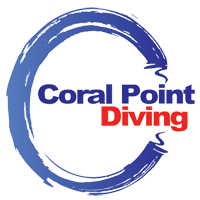


 Diver Level: Any. Depth 6-10 meter/ 20-32 feet. Perfect for every level of diver, Viva Shallows offers a place to practice skills, perfect buoyancy, and discover some of the best diving Bayahibe has to offer. Sitting just off shore and only minutes away, Viva Shallows is a magical site filled with wonders to discover. The small, 3 meter high wall and the reef top offer many holes perfect to offer a safe hide away for animals small and large. Sandy bottom next to the reef invites rays and manatees to come in close, as well. Descending down the buoy line to the bottom 5 meters away, you will see the living museum. In the shallow, Spanish cannons sit and form an artificial reef. Whilst diving amongst the cannons, you can read about their history and feel the weight of the cannon balls used at the time. Seahorses seek solace here and are seen with their tails wrapped around the sponges. Heading down the wall to a maximum depth of 9 meters, Gorgonian fan and other healthy corals give this wall the feeling you are swimming through an aquarium. The wall itself hides lobsters and eels; it also is home to many spotted stingrays and porcupine fish. Visibility can be as far as 20 meters, making it an ideal location to catch glimpses off in the distance. Looking out towards the sand can also bring luck in the way of larger rays and manatees. The reef top sits in about 5 meters of water and is a great place for baby animals. Making way back towards the museum, baby box fish can be found hiding in the rocks as drum fish maneuver their way amongst the corals. If there ever is any current encountered at this site is extremely light and simply aids in an easy return trip back to the boat.
Diver Level: Any. Depth 6-10 meter/ 20-32 feet. Perfect for every level of diver, Viva Shallows offers a place to practice skills, perfect buoyancy, and discover some of the best diving Bayahibe has to offer. Sitting just off shore and only minutes away, Viva Shallows is a magical site filled with wonders to discover. The small, 3 meter high wall and the reef top offer many holes perfect to offer a safe hide away for animals small and large. Sandy bottom next to the reef invites rays and manatees to come in close, as well. Descending down the buoy line to the bottom 5 meters away, you will see the living museum. In the shallow, Spanish cannons sit and form an artificial reef. Whilst diving amongst the cannons, you can read about their history and feel the weight of the cannon balls used at the time. Seahorses seek solace here and are seen with their tails wrapped around the sponges. Heading down the wall to a maximum depth of 9 meters, Gorgonian fan and other healthy corals give this wall the feeling you are swimming through an aquarium. The wall itself hides lobsters and eels; it also is home to many spotted stingrays and porcupine fish. Visibility can be as far as 20 meters, making it an ideal location to catch glimpses off in the distance. Looking out towards the sand can also bring luck in the way of larger rays and manatees. The reef top sits in about 5 meters of water and is a great place for baby animals. Making way back towards the museum, baby box fish can be found hiding in the rocks as drum fish maneuver their way amongst the corals. If there ever is any current encountered at this site is extremely light and simply aids in an easy return trip back to the boat. 

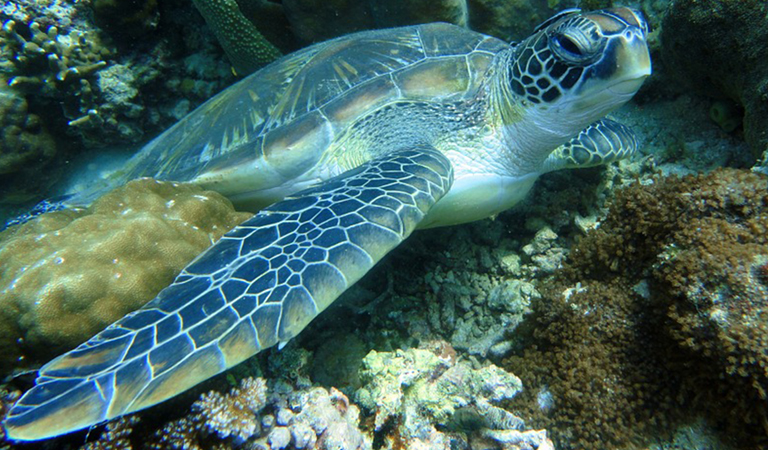
 Length 73 m / 240 ft, Stern 31 m / 102 ft, Depth 44 m / 144 ft, Top of the wreck 15 m / 50 ft. Distance from Coral Point diving 800m / 0.5 mile. Diver Level: Advanced Divers. Each dive to St George boasts endless opportunity to gaze in awe at the wreck, but you never know what will swim by. Eagle rays and barracudas have been known to visit and rumor has a green moray eel has taken up residence in the chimney of this impressive ship. After being intentionally sunk back in 1999, the wreck of St George has become one of the best dive sites in the area. Originally used to transport grain and barley between Norway and the Americas in 1962, the ship was abandoned in Santo Domingo after 20 years of use. Now she rests 800 meters offshore from Coral Point diving in Bayahibe under 40 meters of water. When she was sunk they changed her name to St George after the hurricane that hit the area the year before. Upon descending down the buoy line, the first thing that comes into view is the top of the chimney that sits down 15 meters below the surface. As you continue descending, the enormity of the 73 meter long wreck comes into view. With the majority of the wreck sitting between 25 and 35 meters deep, the average dive at this site lasts 30 minutes. Due to her depth, St George is recommended only to those who are certified advanced open water divers. Surface currents are commonplace at this dive site and occasionally a strong current can be encountered at depth crossing over the open deck. Every dive on this wreck is a special dive. Many beautiful corals has grown on the wreck over the years, you can watch barracudas and many school of fish going through each other, never mixing together. If you are not certified advanced diver yet, why don’t you take the PADI AOWD course with us?.
Length 73 m / 240 ft, Stern 31 m / 102 ft, Depth 44 m / 144 ft, Top of the wreck 15 m / 50 ft. Distance from Coral Point diving 800m / 0.5 mile. Diver Level: Advanced Divers. Each dive to St George boasts endless opportunity to gaze in awe at the wreck, but you never know what will swim by. Eagle rays and barracudas have been known to visit and rumor has a green moray eel has taken up residence in the chimney of this impressive ship. After being intentionally sunk back in 1999, the wreck of St George has become one of the best dive sites in the area. Originally used to transport grain and barley between Norway and the Americas in 1962, the ship was abandoned in Santo Domingo after 20 years of use. Now she rests 800 meters offshore from Coral Point diving in Bayahibe under 40 meters of water. When she was sunk they changed her name to St George after the hurricane that hit the area the year before. Upon descending down the buoy line, the first thing that comes into view is the top of the chimney that sits down 15 meters below the surface. As you continue descending, the enormity of the 73 meter long wreck comes into view. With the majority of the wreck sitting between 25 and 35 meters deep, the average dive at this site lasts 30 minutes. Due to her depth, St George is recommended only to those who are certified advanced open water divers. Surface currents are commonplace at this dive site and occasionally a strong current can be encountered at depth crossing over the open deck. Every dive on this wreck is a special dive. Many beautiful corals has grown on the wreck over the years, you can watch barracudas and many school of fish going through each other, never mixing together. If you are not certified advanced diver yet, why don’t you take the PADI AOWD course with us?.
 Diver Level: Any. Depth 12 meters/40 feet. A great place to have a drift dive when a light current is present, Luca’s reef is quite expansive and filled with hard and soft corals. Most days, however, very minimal current is at this dive site. Home to two different coral nurseries, Luca’s is a dive site to be visited. The coral garden tucked below 11 – 14 meters of water is gorgeous. Long fingers of healthy reef jutt out into the sand from the main reef, creating the perfect habitat for a wide variety of fish. With the main part of the reef sitting quite close to the bottom, this site offers a lot of open water between the reef top and the surface. Because of this, squid can often be seen swimming through mid water. Larger fish, such as barracudas, have been known to pass through as well. Visibility is as far as 15 to 20 meters. The coral nurseries offer protection for many young fish. Hidden amongst the corals in these areas are baby box fish, butterflyfish, and colorful wrasse. Heading over the main part of the reef you are more likely to find green and spotted moray eels, lobsters, and porcupine fish. Sandy patches between the fingers of the reef draw in many rays; spotted stingrays, southern stingrays, and eagle rays have all be sited at Luca’s.
Diver Level: Any. Depth 12 meters/40 feet. A great place to have a drift dive when a light current is present, Luca’s reef is quite expansive and filled with hard and soft corals. Most days, however, very minimal current is at this dive site. Home to two different coral nurseries, Luca’s is a dive site to be visited. The coral garden tucked below 11 – 14 meters of water is gorgeous. Long fingers of healthy reef jutt out into the sand from the main reef, creating the perfect habitat for a wide variety of fish. With the main part of the reef sitting quite close to the bottom, this site offers a lot of open water between the reef top and the surface. Because of this, squid can often be seen swimming through mid water. Larger fish, such as barracudas, have been known to pass through as well. Visibility is as far as 15 to 20 meters. The coral nurseries offer protection for many young fish. Hidden amongst the corals in these areas are baby box fish, butterflyfish, and colorful wrasse. Heading over the main part of the reef you are more likely to find green and spotted moray eels, lobsters, and porcupine fish. Sandy patches between the fingers of the reef draw in many rays; spotted stingrays, southern stingrays, and eagle rays have all be sited at Luca’s.

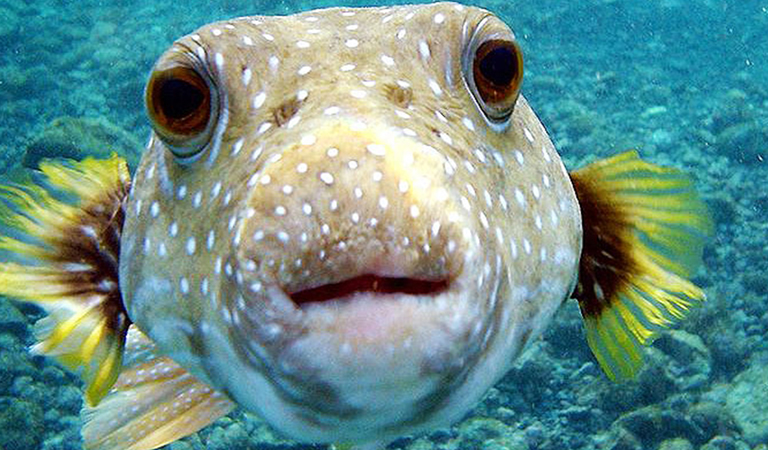
 Diver Level: Any. Depth 12-14 meters/40-45 feet. Safely inside the National Park of the East, Penon is a must do when visiting the Bayahibe area. Being in the national park means that this site is protected from fishing and thus the life at this site is abundant. The maximum depth here is 14 meters with the reef top starting at 11 meters. A small wall leads the way away from the buoy, turning back over the reef top, using any light current to return to the boat. The reef wall is a magical place to find fish large and small. Swimming just over top are parrot fish and wrasse. Bobbing in and out of the holes you can find eels, drumfish, and squirrelfish. Taking shelter in the soft corals you can find trumpet fish and baby filefish. Manatees and southern stingrays love the sand just to the side of the reef wall. One of the best sites to see big things, Peñon is one to look outward to the open water. Visibility usually 20 meters or more, looking out can boast glimpses of passing turtles and sharks. Eagle rays often come and visit the reef here as well. Sandy bottom stretches outward from the reef’s wall edge make it a perfect location for large stingrays to bury themselves in the sand. One of the best dive site in the Dominican Republic. Peñon is a dive site for divers of all abilities. Minimal current, great visibility, and amazing underwater life make this site you have to take your camera to. The shallow reef top makes Peñon a perfect place for snorkelers to watch the divers below and explore the reef.
Diver Level: Any. Depth 12-14 meters/40-45 feet. Safely inside the National Park of the East, Penon is a must do when visiting the Bayahibe area. Being in the national park means that this site is protected from fishing and thus the life at this site is abundant. The maximum depth here is 14 meters with the reef top starting at 11 meters. A small wall leads the way away from the buoy, turning back over the reef top, using any light current to return to the boat. The reef wall is a magical place to find fish large and small. Swimming just over top are parrot fish and wrasse. Bobbing in and out of the holes you can find eels, drumfish, and squirrelfish. Taking shelter in the soft corals you can find trumpet fish and baby filefish. Manatees and southern stingrays love the sand just to the side of the reef wall. One of the best sites to see big things, Peñon is one to look outward to the open water. Visibility usually 20 meters or more, looking out can boast glimpses of passing turtles and sharks. Eagle rays often come and visit the reef here as well. Sandy bottom stretches outward from the reef’s wall edge make it a perfect location for large stingrays to bury themselves in the sand. One of the best dive site in the Dominican Republic. Peñon is a dive site for divers of all abilities. Minimal current, great visibility, and amazing underwater life make this site you have to take your camera to. The shallow reef top makes Peñon a perfect place for snorkelers to watch the divers below and explore the reef. Diver Level: Any. Depth 12-14 meters/40-45 feet. A known hot spot for turtles, Tortuga (meaning Turtle) is a must dive site location within the National Park of the East. A half an hour boat journey from Coral Point takes you to the site that offers the best chance of seeing the larger life in the area. The maximum depth at this site is 12 meters, with the visibility often 20 meters or more. Due to its location inside the national park, fishing at this site is forbidden. The life underwater at Tortuga is healthy and lively. Without much current, this site is perfect for a nice leisurely dive where you can truly enjoy all the life that surrounds. As the name suggests, turtles can be found at this dive site. While looking for turtles and nudibranchs, don’t forget to look up as eagle rays have been known to swoop through. Large lionfish and green morays are also found at Tortuga tucked in and around the rocks and corals. The easy diving conditions and great reef at Tortuga invites divers of all abilities and levels. Snorkelers can even enjoy the reef from above with the visibility as good as it is here!
Diver Level: Any. Depth 12-14 meters/40-45 feet. A known hot spot for turtles, Tortuga (meaning Turtle) is a must dive site location within the National Park of the East. A half an hour boat journey from Coral Point takes you to the site that offers the best chance of seeing the larger life in the area. The maximum depth at this site is 12 meters, with the visibility often 20 meters or more. Due to its location inside the national park, fishing at this site is forbidden. The life underwater at Tortuga is healthy and lively. Without much current, this site is perfect for a nice leisurely dive where you can truly enjoy all the life that surrounds. As the name suggests, turtles can be found at this dive site. While looking for turtles and nudibranchs, don’t forget to look up as eagle rays have been known to swoop through. Large lionfish and green morays are also found at Tortuga tucked in and around the rocks and corals. The easy diving conditions and great reef at Tortuga invites divers of all abilities and levels. Snorkelers can even enjoy the reef from above with the visibility as good as it is here!

 Diver level: AnyDepth: 12-16 mtr / 39-52 ft. If you’re searching for a tropical paradise for your next getaway, you’ll find everything you’ve been looking for in Catalina Island. It may be a small island in the Dominican Republic, but Catalina Island has got more to it than meets the eye. Besides being gorgeous, this island is majorly set up for the best kind of snorkeling and diving. Catalina Island sits near a protected marine area, meaning there’s plenty of coral, untouched reefs, and lots of your favorite ocean friends who love to hang out here. On the east side of the island is a reef nicknamed “the wall”, while the western side of the island boasts a snorkel spot nicknamed “the aquarium”. Both help you imagine what’s waiting for you when you dip below the waves — schools of colorful fish flitting around bunches of coral. Sometimes, snorkelers spot stingrays settling in the sand bed. Dreamy.
Diver level: AnyDepth: 12-16 mtr / 39-52 ft. If you’re searching for a tropical paradise for your next getaway, you’ll find everything you’ve been looking for in Catalina Island. It may be a small island in the Dominican Republic, but Catalina Island has got more to it than meets the eye. Besides being gorgeous, this island is majorly set up for the best kind of snorkeling and diving. Catalina Island sits near a protected marine area, meaning there’s plenty of coral, untouched reefs, and lots of your favorite ocean friends who love to hang out here. On the east side of the island is a reef nicknamed “the wall”, while the western side of the island boasts a snorkel spot nicknamed “the aquarium”. Both help you imagine what’s waiting for you when you dip below the waves — schools of colorful fish flitting around bunches of coral. Sometimes, snorkelers spot stingrays settling in the sand bed. Dreamy.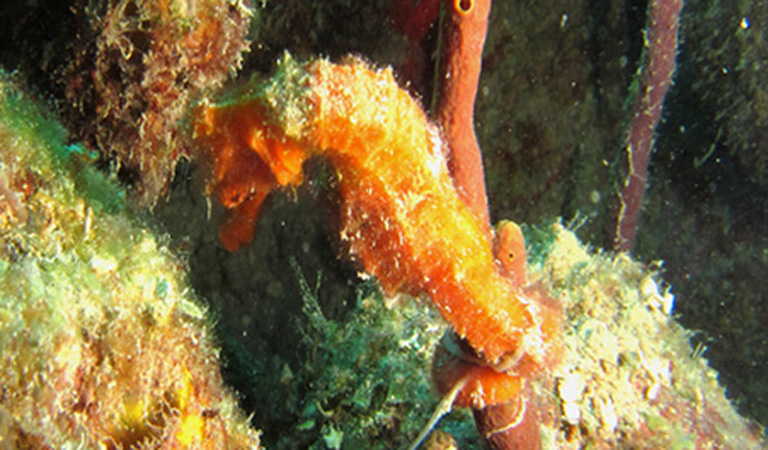 Diver Level: Any Depth 14-22 meters/45-70 feet. Sitting 16 meters below the buoy at this site sits a small wrecked wreck, the. Coca Wreck. Although much resemblance to a ship has been lost, the pieces of the boat that scatter the section of reef are worth exploring. Having seen many storms pass through, the area that the pieces are scattered over is quite large. Hidden in and around the boat are lionfish and eels. Many more shy fish, such has balloon fish can be found under larger hanging pieces of the wreck. The reef at this site spans the entire sea floor. Massive fan corals and sea plumes waft back and forth in the light surge. Depths at this site can go as deep as 20 meters while exploring the coral garden. The 15 meter visibility makes spotting the calamari passing through easy.
Diver Level: Any Depth 14-22 meters/45-70 feet. Sitting 16 meters below the buoy at this site sits a small wrecked wreck, the. Coca Wreck. Although much resemblance to a ship has been lost, the pieces of the boat that scatter the section of reef are worth exploring. Having seen many storms pass through, the area that the pieces are scattered over is quite large. Hidden in and around the boat are lionfish and eels. Many more shy fish, such has balloon fish can be found under larger hanging pieces of the wreck. The reef at this site spans the entire sea floor. Massive fan corals and sea plumes waft back and forth in the light surge. Depths at this site can go as deep as 20 meters while exploring the coral garden. The 15 meter visibility makes spotting the calamari passing through easy. 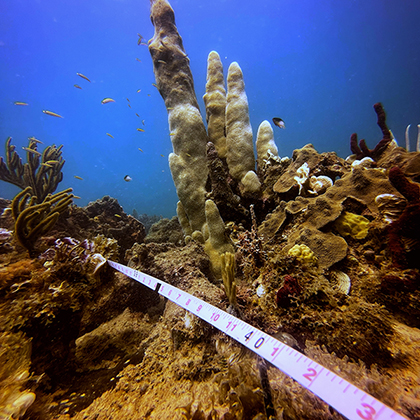
 Diver Level: Any. Depth 8-10 meters/ 26-32 feet- Tucked away just around the corner from Coral Point and off from the Magallanes Beach we have the dive site Magallanes. Going no deeper than 9 meters, Magallanes is the perfect place to build confidence in diving. Conditions are calm and easy as well, as it is situated in a small cove. The conditions at Magallanes make it perfect for snorkeling as well. Descending down the buoy line to the bottom, you will reach a depth of only 5 meters. From there, passing over a small sandy patch, a wall of reef on either side will open up. Following one of the walls along over the sandy bottom, many butterfly fish and creole wrasse will greet you as you pass by the reef. The reef here is also home to many sea urchins, sea horses, blennies, and eels. This lovely, shallow dive site is a perfect place to discover scuba, learn to dive, or get back into the water after a long break
Diver Level: Any. Depth 8-10 meters/ 26-32 feet- Tucked away just around the corner from Coral Point and off from the Magallanes Beach we have the dive site Magallanes. Going no deeper than 9 meters, Magallanes is the perfect place to build confidence in diving. Conditions are calm and easy as well, as it is situated in a small cove. The conditions at Magallanes make it perfect for snorkeling as well. Descending down the buoy line to the bottom, you will reach a depth of only 5 meters. From there, passing over a small sandy patch, a wall of reef on either side will open up. Following one of the walls along over the sandy bottom, many butterfly fish and creole wrasse will greet you as you pass by the reef. The reef here is also home to many sea urchins, sea horses, blennies, and eels. This lovely, shallow dive site is a perfect place to discover scuba, learn to dive, or get back into the water after a long break
 In the waters off the Dominican Republic, there are more than 800 species of fish, most of which are marine and coral reef fish, although there are also a few are freshwater fish or natives of this country. Below are the most well-known and commonly spotted:
In the waters off the Dominican Republic, there are more than 800 species of fish, most of which are marine and coral reef fish, although there are also a few are freshwater fish or natives of this country. Below are the most well-known and commonly spotted:


